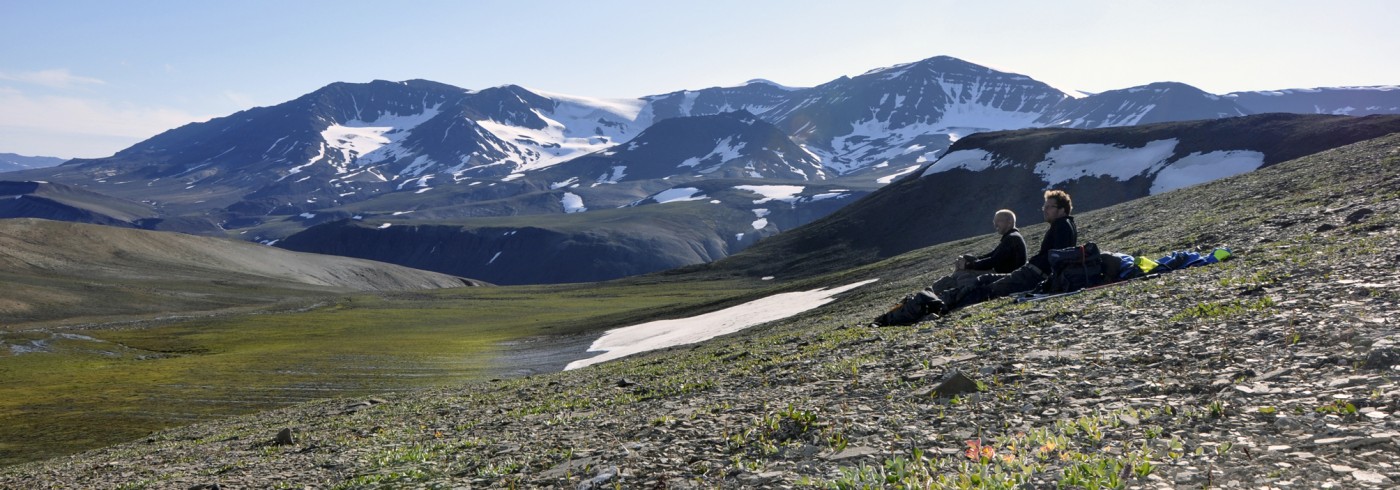First Steps to and from the Water – Part 2
26 July 2016 - 1 September 2016Vertebrates first emerged onto land during the Devonian 358 million years ago. 108 million years later in the earliest Triassic, they returned to the sea. These events are recorded by fossils, which reveal profound transitions from fins to limbs, and then flippers, as well as the development of live birth in water. But what environmental pressures drove these landmarks for life on Earth?
Only one place preserves rocks that simultaneously evidence such evolutionary milestones – East Greenland. We targeted the world famous, yet extremely remote deposits at Celsius Bjerg on Ymer Island, and Kap Stosch on Hold With Hope, to reconstruct the earliest tetrapod (limbed animals) and secondary marine amniote (land-living animals) ecologies. In particular, we searched for trace fossils including footprints and feeding residues, which can be used to link skeletal remnants with ancient habitat indicators left by living organisms. This year, a reconnaissance was also undertaken for dinosaur fossils from Late Triassic rock strata in the Carlsberg Fjord area of Jameson Land.
The expedition findings proved spectacular, and included a virtually complete body trace left by an Ichthyostega-like tetrapod, as well as numerous footprints and body fossils demonstrating new occurrences of Devonian-Carboniferous tetrapods, early bony fish and freshwater shark remains. Likewise, exploration in earliest Triassic successions discovered exceptionally preserved early reef-forming communities, as well a diversity of fish species, and even the skeleton of a small terrestrial archosauriform – a distant antecedent of modern crocodiles and birds. A mass accumulation of Late Triassic dinosaur footprints incorporating a rare “sitting trace” was also recovered, along with bones and teeth of a primitive carnivorous theropod, which represents the oldest Boreal dinosaur fossil known to date.




